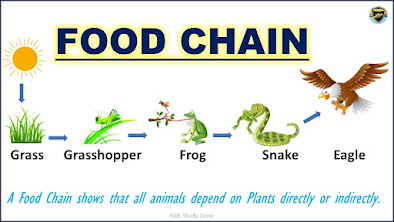THE ECONOMY
Economy is the way countries make things, offer services and divide things between people, usually using money. Goods and services are made and exchange.
ECONOMIC ACTIVITY CHART
2.1. THE PRIMARY SECTOR
It involves obtaining raw materials directly from nature. There are 5 types:
• Arable farming: the cultivation of crops. Farmers can grow 2 types of crops:
◦ Dry crops: need only rainwater. Example: cereal and olives.
◦ Irrigated crops: need extra water to grow. Example: fruit and vegetables.
• Livestock farming:the caring of animals. Farmers buy and sell them to produce food and products. There are 2 types:
◦ Extensive farming: animals are outdoors in open spaces.
◦ Intensive farming: animals are kept in enclosed spaces.
• Fishing: catching fish and animals from rivers, lakes, seas and oceans. There are 2 types:
◦ Deep-sea fishing: carried out far away from the coast.
◦ Coastal fishing: carried out near the coast.
• Mining: taking natural materials from the Earth’s crust. There are 2 types:
◦ Undergroung mining: carried out in tunnels.
◦ Open-cast mining: carried out in the surface.
• Forestry: exploitation of forests and tree plantations. The process of cutting down forests by humans is called deforestation.
**THE PRIMARY SECTOR IN SPAIN
• Today, only 5% of active population works in the primary sector.
• Fishing is a very important activity due to the huge coast in Spain.
• Pig farming is very important in Extremadura.
2.2. THE SECONDARY SECTOR
Workers take the raw materials produced in the primary sector and turn them into products that people can use. This process is called manufacturing. There are some types:
• Energy industries: they supply homes with the energy they need. They can use:
◦ Non-renewable sources: like coal, oil and gas.
◦ Renewable sources: like sunlight, wind and water.
• Base industries: transform raw materials into semi-finished products. Example: metal and chemical industries.
• Construction industries: use raw materials to make buildings, roads or bridges.
• Capital goods industries: use base industry products to manufacture machinery and equipment. Example: automotive industry.
• Consumer goods industries: use the products produced by the base and capital goods industries. They make, for exaple, cars, clothing or cosmetics.
**THE SECONDARY SECTOR IN SPAIN
• Today, about 30% of the active population works in the secondary sector.
• Most industries are located in big cities like Madrid or Barcelona.
2.3. THE TERTIARY SECTOR
It is also known as service sector because it provides services for the public.
• Education: people who help us to learn. Example: teachers.
• Healthcare: people who look after out health. Example: doctors.!C
• Transport: people who carry other people or goods from one place to another. There are 3 types:
◦ Land transport: road or rail transport. Example: cars or buses.
◦ Air transport: Example: plane.
◦ Water transport: Example: boat.
• Media and communication: people who provide us with information. Examples: radio, TV, newspaper or internet.
• Tourism and trade: people who supplies accommodation and entertainment to tourists and who deliver products.
**THE TERTIARY SECTOR IN SPAIN
It is the most important economic sector in Spain.
• Today, about 65% of active population works in the tertiary sector.
• The most important activity is tourism and there are 4 types:
◦ Beach tourism
◦ Rural tourism
◦ Cultural tourism
◦ Adventure tourism
GLOSSARY UNIT ECONOMY
Raw materials: materia prima
Goods: bienes
Services: servicios
Exchange: intercambio
Arable farming: agricultura
Livestock farming: ganadería
Mining: minería
Forestry: silvicultura. Tratamiento y cuidado de los bosques.
Dry crops: cultivos secos
Irrigated crops: cultivos de regadío
Extensive farming: ganadería extensiva
Intensive farming: ganadería intensiva
Outdoors: al aire libre
Enclosed: cercado
Deep-sea fishing: pesca de aguas profundas
Coastal fishing: pesca costera
Carried out: llevado/a a cabo
Crust: corteza (terrestre)
Underground mining: minería subterránea
Open-cast mining: minería a cielo abierto
Surface: superficie
Deforestation: deforestación (destrucción y tala de bosques)
Active population: población activa
Pig farming: cría de cerdos
Due to: debido a
Manufacturing: producción, fabricación
Energy industries:
Non-renewable sources: fuentes de energía no renovable
Renewable souces: fuentes de energías renovable
Coal: carbón
Oil: petróleo
Base industries: industrias base
Construction industries: industria de la construcción
Capital goods industries: industrias de bienes de capital
Machinery: maquinaria
Equipment: equipamiento
Automotive industry: industria automovilística
Consumer goods industries: industrias de bienes de consumo
Service sector: sector servicios
Healthcare: sanidad
Tourism: turismo
Trade: comercio
Accommodation: alojamiento



No hay comentarios:
Publicar un comentario